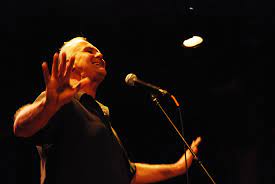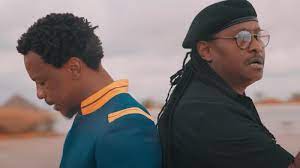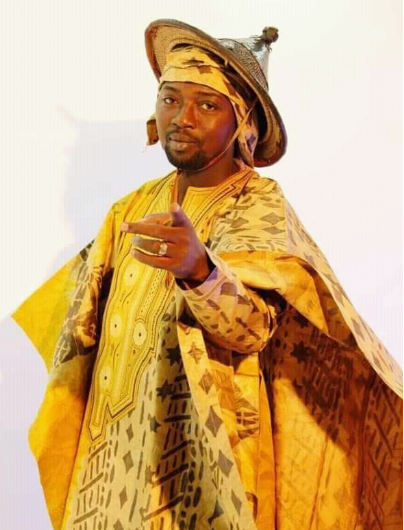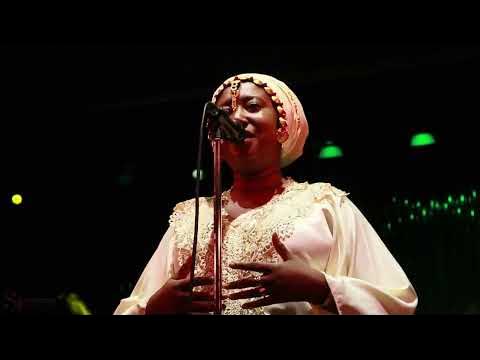Global slam poetry with multimedia is transforming language into a universal art
By Gouwendmanegre Nikiema
Poetry was originally used by sages and griots to account for the great achievements of kings and warriors. As “communal literature” poems have addressed problems, expressed feelings, or celebrated people and events. The poet provides a message, and in return the audience is expected to listen with an open mind. Today, most students of literature encounter poetry in printed form, such as through the Norton Anthology of Poetry which appeared in 1970 and is now in its sixth edition, including no less than 1,871 poems. However, through most of history, poetry has been an oral art form. When Marc K Smith invented “slam poetry” in Chicago 1980’—live competitions of oral poetry—he revived a tradition that had been prevalent for much of human history. In a sense, he brought poetry back to the people.

Slam poetry is an visceral and immediate experience, reliant on the power of spoken word to convey emotion and provoke thought. The main focus of slam competitions is to seduce the audience and entice judges. Slam poets seek communion between performer and crowd. Hence the choice of tonality, rhythm, and the dynamism of the word must resonate with the audience. Slam poetry has a deep affinity with music. Few people know that much of hip-hop, rap, jazz, R&B lyrics are sourced from Slam. But there are other ways in which slam and music can relate.
In November 2019, Henrik Szanto & and Jonas Scheiner, a duo of Slam Poetry artists met the qWINDtett a group classic musicians. Together they decided to do something they had never done before: combine slam poetry art with works of classical music. During the project the artists noticed the invaluable involvement of both sides: as the slam poets tried to match their rhythm and verses to the music, the musicians sought to paint their words. The collaboration taught them two things. First, the participants valued the expansion of their horizons facilitated by the learning process on both sides, so the improvised rehearsal, though initially unsettling for the musicians, sparked a desire for unconventional concert formats and new perspectives. Second, the artists realized that their collaboration served as a conduit for bringing audiences from different backgrounds who might not have met otherwise together.
To be sure: classical music, with its meticulously composed arrangements and melodies, seems antithetical to the improvised and often confrontational nature of slam poetry. But when we examine their collaborations, a fascinating synergy emerges. The rhythmic cadence of spoken word finds an unexpected partner in the structured elegance of classical music, demonstrating the transformative power of their combination. Music structures time and expresses emotions. In that sense it can act as rails to the train of the poet’s words. Music has the power of reaching a spiritual domain that one cannot explain through words alone–you just have to feel it. The classical music played can be adapted to the cultural identity and musical experience of the type of audience the poet is addressing—with the same poem. There’s a delicate balance between complementing the narrative and potentially overshadowing the raw authenticity that defines Slam Poetry. The infusion of music introduces a rhythmic layer, potentially enhancing the emotional resonance of the performance. This is similar to what we know about both jazz and contemporary storytelling.
Additionally, music plays an important role in the creation of memory and emotions. Hence, music takes a form that provides access to the words of the poet beyond meaning and encrypts them into a new art form. The blending of music to poetry allows communion between the artists and music lovers as well as between the artists and poetry lovers. Not surprisingly, the fusion of slam to classical music gave rise to something unique that neither text nor music could have achieved independently. Yet, this musico-poetic fusion is not without its challenges and complexities. Classical music, steeped in tradition, may risk overshadowing the spontaneity and rawness that define slam poetry. Conversely, slam poetry, with its unbridled energy, may challenge the delicacy and precision inherent in classical music. This tension necessitates a delicate balance—one that requires both art forms to adapt, coalesce, and enrich each other without diluting their intrinsic qualities. That said, the fusion of slam poetry and classical music can elicit an unexpected harmony that transcends the conventional boundaries of both art forms. As a testament of the immediacy and authenticity of spoken word performance, slam poetry capitalizes on the raw energy of live delivery, where poets engage in a spirited dialogue with their audience.
If slam poetry rises in the power of language in convincing audiences, is it possible for all cultures to trust language? At its core, slam poetry is a visceral and immediate experience, reliant on the power of spoken word to convey emotion and provoke thought. It endows the poet with enormous power—slam artists are modern griots—to showcase their cause before their audience and be more convincing. But can this genre address global issues and reverberate the same way around the globe? This seems unlikely, as people have different experiences and use language differently to engage and convince a wider audience about various perspectives. Here is where adding another medium can help. The infusion of multimedia elements, encompassing visuals, music, and technology, have reshaped slam poetry, offering a multi-sensory immersion into the poet’s narrative, and broadening its impact.

In “Sale Temps” the collaboration between Smarty and Awadi utilizes multimedia to address corruption, climate irresponsibility, and wars in Africa. Through a blend of the visual elements of these societal issues and the culturally empathetic sound of the “Kunde” the artists employ a multi-sensory approach, conveying their message powerfully and effectively beyond words. This dynamic fusion enables them to engage with a wider audience, emphasizing the versatility of slam poetry as a vehicle for global discourse.
Similarly, Malika La Slameuse , in her piece “Mon@” uses romantic piano music and close-up shots to articulate her vision of an ideal lover while providing guidance to African women. The flexibility of multimedia allows her to explore cultural nuances, daily habits, and ideal attire, connecting emotionally and culturally with her audience. She harvests the power of words and visual memories to empower her narrative, demonstrating the effectiveness of multimedia in expanding the reach of slam poetry.

Further exemplifying this trend is DONSHARP DE BATORO , who has been called “the Great Lyricist of contemporary time.” He employs multimedia elements to interpret the story of ‘ SUNDJATA King of the Mali Empire.’ Traditional woodwind instruments and dried drums accompany his narrative, creating an indexical language around cultural elements, such as the “clack of fingers,” forest landscape, and attires. This multimedia-rich approach allows the artist to forge a profound connection with his audience, conveying not just a story but an immersive experience rooted in his West African tradition.
Thus combined with multimedia slam poetry reaches beyond the stage. As it evolves into a digital format, it has become more accessible and inclusive, allowing the artist to be in communion with their audience, locally and globally. Compared to combining text and music as in classical and popular songs, the use of multimedia in slam yields an new form of affective engagement by the audience.
